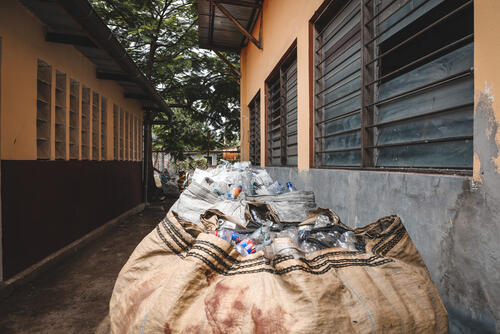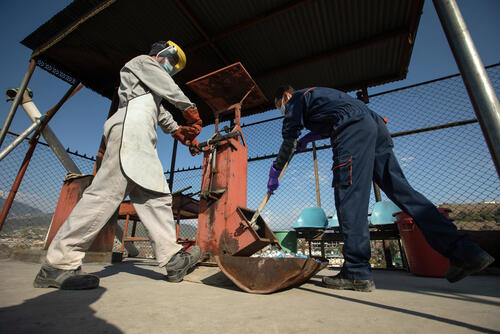By Richard Lokollo, MSF Indonesia Environmental Health Training Supervisor
With the increasing frequency and intensity of natural disasters globally, especially in urban areas, it is crucial to have an effective waste management system in place during natural disasters. This helps facilitate a smoother recovery process and contributes to maintaining a safe and sustainable living environment, mitigating the risks of future disasters and environmental degradation. Among the critical aspects of disaster waste management, ensuring health and safety measures is a top priority.
Ensuring the health and safety of emergency responders is critical to the success of any waste management initiative during emergencies and must be integrated from the outset. Minimum requirements should include:
-
Ensuring supervision of disaster waste management by experienced personnel who effectively implement safety protocols.
-
Provide personal protective equipment (PPE) to all those involved, including staff at health centres, hospitals and local communities engaged in debris removal.
-
Equip workers with essential PPE, including hard boots, hats, gloves, overalls, and masks, to reduce potential hazards.
-
Design waste handling sites with safety in mind, incorporating one-way traffic systems and separating vehicles from workers. Provide clean facilities for workers to change and wash.
-
Provide adequate dust suppression when crushing rubble or processing waste (e.g. using water mist).
Facilities and equipment should be fitted with noise, vibration and harmful emission reduction mechanisms, as well as machinery guards to prevent accidents. It should be noted that there are increasing cases of legal action relating to exposure to hazardous substances during disaster clean-up works.

| Chemical Risks | Biological Risks | Physical Risks | Local Environmental Risks |
|---|---|---|---|
|
|
|
|
|

Regulatory Guidelines for Effective Waste Management
In all circumstances, including disaster scenarios, adherence to basic waste management regulations is crucial. Here are some fundamental rules to follow:
-
Equipment Management
Select, use, maintain, and repair health-related equipment carefully to minimize hazardous waste generation.
-
Handling Expired Products
Never utilize expired substances, especially medicines, unless authorized by the manufacturer or a specialized body after testing. Expired products, such as insecticides, should only be used for training purposes under proper supervision.
-
Risks of Expired Medications
Using medications beyond their expiration date poses significant risks, ranging from reduced efficacy to toxic effects. This is particularly critical for vaccines and antibiotics, as decreased efficacy can lead to false perceptions of safety and the development of antimicrobial resistance.
-
Proper Handling of Waste
Avoid errors in the storage, sorting, packaging, transport, and disposal of health- related hazardous waste, as they can have severe environmental and health implications.
Examples include the diversion of medicines or pesticides for illegal resale, improper destruction leading to water or air pollution, and storing incompatible chemicals together, which can generate heat or toxic gases.
-
Attention to Hazardous Materials
Antineoplastic medicines and their handling materials are highly toxic and require extreme care during handling and disposal to prevent adverse health and environmental effects.
By strictly adhering to these regulations, we can minimize the generation of hazardous waste, mitigate environmental pollution, and safeguard human health in both routine and emergencies.
